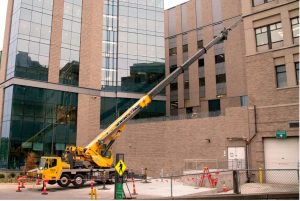The 3 main components of a solar PV system explained

There are 3 main components to a solar PV system. What are they, what do they do, and how do they affect energy generation, profitability, and the overall appearance of the PV?
The three main elements are:-
Solar panels
Inverter
Mounting system
While there are other optional components, such as immersion diverters, batteries, and so on, the panels, inverters, and mounting solutions you choose will form the essential backbone of any system.
1 – Panels for solar energy
These are the primary power-generating assets. While they come in various shapes and sizes, the standard technologies (polycrystalline and monocrystalline) typically measure 1.5m by 1m and weigh roughly 15kg each.
When selecting a solar panel, the critical decisions will depend on your project’s circumstances. Suppose you’re planning a large, ground-mounted solar plant for a commercial location. In that case, a cheaper solar panel may be a better option. Higher quality PV, however, may pay off in the long run if you’re seeking a long-term minimal maintenance roof mount.
It’s worth noting that your solar panels must be the same manufacturer and type in most circumstances. This is due to two significant factors:
- Without power optimisers, a series of PV modules will only provide as much energy as the worst-performing module on the string.
- Replacement panels must have identical dimensions to be placed together.
Ground-mounted polycrystalline solar PV installation
Polycrystalline PV, distinguished by its characteristic speckled appearance, is frequently used in ground-mount solar farms due to its reduced cost.
2 – The mounting system
Your site and needs determine the ideal mounting option for you.
- Roof mounts are bolted directly into the structure and take up the space of a few tiles.
- Ground mounts are buried in the ground, sunk into it, or supported by concrete piles.
There are several options available here. Large solar farm projects frequently use modular rack mounts to change solar panels easily.
On the other hand, homeowners will frequently install panels on their roofs. At the same time, those seeking a sleeker aesthetic will often opt for smaller, more flush mounts. The main deciding factor is where you want your panels to be and how they should appear.
Inverters
Inverters convert solar energy from direct current (DC) from solar panels to alternating current (AC) used in dwellings. This process entails certain power losses, which can be reduced by proper inverter sizing and system design.
Standard inverters will have a power rating, such as 2kW, 3kW, etc. This refers to the inverter’s maximum power output. The size of the inverter will be determined by the number and type of panels you have.
For example, suppose your system contains twelve 330W panels. In that case, you know that the maximum DC energy generated by the panels will be around 12×330=3960, or 3.96kW. This indicates that a suitable inverter should be in the 4kW range.
It is also important to remember that the inverter is responsible for monitoring the operation of your PV system.
Inverter vs. Microinverter
Traditional inverters process all of your solar energy in one location by connecting to strings of solar panels situated elsewhere – for example, a typical roof-mounted PV array may frequently give feedback to a central inverter in a loft or garage.
On the other hand, microinverters are strung between panels in the same location as the array. Many microinverters will be used for the same system, each processing less energy individually.








